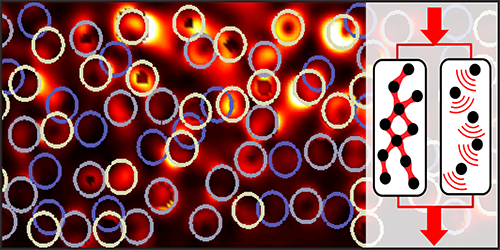Through a Glass Densely
A material containing small, randomly arranged objects can scatter incoming light so that very little goes through to the other side. However, if the scattering objects are packed closer together, more light gets through. A new theoretical model explains this counterintuitive effect by assuming that nearby objects interact through short-range evanescent waves. The researchers performed numerical simulations and showed that they matched experiments in which the density of scatterers was varied.
Physicists have formulated several theories for light propagation through a medium containing scattering elements. A common assumption is that the scatterers act independently. But this doesn’t explain why certain dense media, such as the eye’s cornea, are transparent. Models that include interference effects can explain the cornea’s transparency, but they fail when the separation between scattering objects becomes smaller than the light’s wavelength.
At very small separations, two objects are within the so-called “near field” of each other. This means that evanescent waves, which normally decay away over long distances, can travel from one scattering object to another. The model of Aristide Dogariu, from the University of Central Florida in Orlando, and his collaborators includes neighbor-to-neighbor excitations through evanescent waves. The researchers showed that near-field effects provide additional “channels” for light to travel through a material. Using numerical simulations, they predicted that the light transmission through a dense medium can be as much as 3 times higher than expected from models of independent scatterers. The model’s predictions agreed with experiments performed with solutions containing different concentrations of micrometer-sized silica particles. These results may help researchers optimize the transparency of novel disordered materials like photonic glasses.
This research is published in Physical Review Letters.
–Michael Schirber





